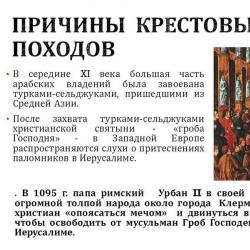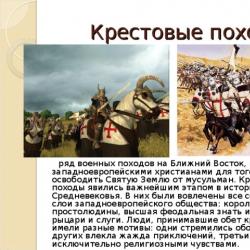The globe has been created. In which country did the first globe appear? What is a globe
The ship rushed into the distance, rapidly cutting through the heavy waves. The captain determined the position of the North Star, made some calculations, and then bent over the globe. The caravel had been in the ocean for many days, and only the star and this ball helped the crew to determine the position of the ship. In those days, without a globe, it was almost impossible not to go astray on the way to a distant overseas country. Therefore, he was on almost every ship that went on a long voyage. The globe also served as a map. And so it continued until the 18th century. Only later, when sailing directions and detailed nautical charts appeared, did the globe lose its great significance for sailors, but it came in handy for schoolchildren.
Its meaning is very well described by S.I. Ozhegov in the dictionary: "A globe is a rotating model of the globe or other spherical celestial body." It is this model that most correctly reflects the appearance of our planet and the ratio of its parts.
Globes have been made since ancient times. In ancient writings there are references to Crates from Pergamon, who made the "earth globe" more than 2000 years ago. However, to our great regret, no fragments of these images have survived to this day. The oldest, of all surviving, is considered a globe with a diameter of 54 cm, which was created in 1492 by Martin Beyham from Nuremberg. The German geographer, working on the "earth apple", was guided by the materials of the Portuguese and the famous traveler Marco Polo. But on this globe there is no image of America, because at that time, it was not yet discovered.
After 150 years, globes have become quite popular. For example, in London, small orange-sized pocket globes were sold relatively cheaply. Moreover, on the inner parts of his hemispheres, a map of the heavenly bodies was depicted. Thus, this globe was a model of both the Earth and the starry sky at the same time.
Gradually, the design of the globe was complicated. So, in the 16th-18th century, they began to use a clock mechanism that rotates it around its axis, which made it possible to determine the time in any corner of the globe. Sometimes a model of the Moon moving around the globe was attached to it, i.e. this model also served as a calendar. It was very fashionable to own a globe, many monarchs of Europe always put very large richly decorated globes in their office.
Until now, an unusual rare globe with a diameter of 3 meters 19 centimeters is kept in St. Petersburg, which also serves as a planetarium. On its outer surface is a map of the Earth, and on the inside - a map of the starry sky.
The history of this globe is very interesting. In 1713, while traveling through the Duchy of Schleswig-Holstein (now the territory of Germany), Peter I visited Gottorp Castle. It was there that he saw a unique globe of enormous size, and there he was told that this globe was made under the clear guidance of the great geographer and traveler Adam Olearius. The emperor was so amazed by this curiosity that, as a token of gratitude for the military assistance he provided, the guardian of the underage duke presented it to him. So this globe came to St. Petersburg, and later was placed in the building of the Kunstkamera, after the opening of which in 1719, many people could see this amazing exhibit.
After 28 years, in 1747, a serious fire broke out in the museum, as a result of which many antiques were damaged, including this globe, from which only elements of a burnt metal structure remained. The Academy decided to hide the real size of the damage, so it was decided to "build" a similar ball on its own. Among several proposed projects, special attention was paid to the proposal of the famous mechanic-inventor Andrei Konstantinovich Nartov. And in 1748, Benjamin Scott, "master of compass cases", with his assistant F.N. Tiryutin began work on this project. They worked for 7 years. Contemporaries claimed that the result of their work "surpassed the art" of the previous globe. The map has been updated with data based on new geographical discoveries. The globe was reinforced with a metal axis, and inside it was placed a table and a large bench, which simultaneously accommodated 10-12 people. Since a map of the starry sky was depicted on the inner surface of the ball, people, being inside, could observe the movement of celestial forces, as in a planetarium.
One of the first very original globes in Russia was made by Karp Maksimov, a Pskov deacon, in the late 18th and early 19th centuries. This globe with a diameter of about 90 cm, apparently, was given to the Russian emperor as a gift, because until 1793 it was kept in the Kunstkamera museum in the “Cabinet of Peter the Great”. M.V. was very interested in making this ball. Lomonosov, who at that time was at the head of the Geographical Department of the Academy of Sciences.
The largest globe in the world is called a ball with a diameter of 10 meters with a length of the applied meridian of 40 m. It was made in 1899 specifically for the Paris Exhibition. It is notable for the fact that every millimeter of its surface exactly reflected every kilometer of the Earth's surface. Its weight was almost 10 tons. It rotated around its axis at a speed that actually corresponded to the speed of the planet's rotation. It not only marked the relief of the earth's crust, but also marked railways, sea routes, country borders, mineral deposits, even the routes of famous travelers were marked.
Smaller than this, then also a very large globe is kept in Denmark. It was originally a spherical natural gas tank. And 50 years ago, in order to attract tourists, one artist applied relief outlines and geographical symbols characteristic of our planet to its entire surface. The result is a huge globe.
A huge globe has also been created in our country. You can see it on the astronomical site of the capital's planetarium. This model with a diameter of 250 centimeters is made of durable materials specially developed for this purpose - polymers and fiberglass. To apply the drawings, paints were used that are not afraid of precipitation: the rivers are painted with blue colors, the seas are blue, and the valleys are green. On the roof of the building, located next to the astronomical platform, at a distance of 70 meters, a model of the Moon with a diameter of 70 cm was installed. These proportions were not chosen by chance: the result was an exact model Earth-Moon system, only 5 million times smaller than the real system.
Those who read the famous novel by the great writer Mikhail Bulgakov "The Master and Margarita" will surely remember the globe that belonged to the "prince of darkness" Woland. This ball lived the life of the Earth. In the part where it was filled with blood, a war began on the planet at the same point. And looking closely, one could even see all the consequences of the battles - dead people and destroyed buildings. This globe, of course, is a fantasy of a brilliant author. But in reality they produce a wide variety of models of the globe. The most popular at present are political ones, which reflect the real territorial division of the world, as well as physical ones, which describe the physical and geographical state of the Earth. Very original - embossed globes with a convex surface in the form of molding.
These small balls, most likely, will serve people for a very long time, showing our planet in the form in which only astronauts can see it.
Mankind has been trying to imagine what the Earth looks like for many millennia. For clarity, people created a variety of layouts, which can be safely attributed to the globe. So when did he show up?
Many believe that people until the Middle Ages believed that they were walking on a flat planet. However, this is misleading. Back in ancient times, progressive minds boldly put forward the theory that the Earth is a ball. So, for example, thought the great scientist Pythagoras. Therefore, we can conclude that the globe appeared several thousand years ago. More precisely, two thousand years ago. The invention of the globe is attributed to a certain resident of the city of Pergamon (the territory of modern Turkey) named Crates. This is mentioned by a number of ancient historians. Unfortunately, this model of the Earth did not survive to this day.
To date, the oldest globe is the same age as the great discovery of Columbus. It was created by Behaim, a geographer from Nuremberg, Germany in 1492
year. It is truly symbolic that this globe and the discovery of America belong to the same year. Although, it is worth noting that both Americas are absent on this model. Behaim's globe is medium in size. Its diameter is just over half a meter.
Gradually, globes began to spread throughout Europe and gained some popularity. The British even invented pocket globes, the size of a billiard ball. A characteristic feature of the English pocket globes was that they were both a model of the globe and the dome of the starry sky, the image of which was applied to their inside.
Over time, more complex design features began to appear in the globe model. Since the sixteenth century, they began to mount a clock mechanism in the "womb of the earth", which set the globe in motion. This helped determine the time at a particular geographic point. To some models, the Moon was added, which moved around the globe. So in their way it was not only a clock, but also a calendar.
Globes decorated the offices not only of scientists and travelers of that time, but also of monarchs and aristocrats. Such models were usually large in size and expensively inlaid with precious stones and metals.
Peter the Great also had a globe. He received it as a gift from the Duke of Schleswig-Holstein in 1713
year, during his German tour. The globe was huge, more than three meters in diameter, and was similar in design to English pocket ones. In other words, the starry sky was depicted on its inside. Authorship is attributed to Adam Olearius. The globe was in the Kunstkamera for a long time, but, unfortunately, burned down in a fire. A new globe was ordered to the then famous inventor A.K. Nartov. He developed the project, and the globe was made by Scott B. with his apprentice Tityurin. Work on the grandiose layout lasted for seven years. The globe was striking in its size. Inside was a bench for observing the heavenly bodies, which could accommodate up to twelve people. The geographic data on the globe was periodically updated.
But, nevertheless, it was a copy of the German globe. And the first purely Russian was created by a clerk from Pskov - Maksimov Karp. It was at the beginning of the nineteenth century. The globe was relatively small.
The great Russian scientist Mikhailo Lomonosov dreamed of a wide distribution of globes throughout Russia, which, in his opinion, would increase the level of education of the population.
Gradually, globes began to appear depicting not only the Earth, but also the Moon and the starry sky. Now it is impossible to imagine a school or a higher educational institution without a globe, which has firmly entered the life of all mankind.
The invention of the globe is one of the greatest geographical discoveries. With its help, the locations of continents and oceans, islands and seas, tropical forests and icy deserts are easier to remember. This subject was created and improved by many scientists around the world. It has its own history, interesting and very ancient.
The history of the globe
In Latin, globe means ball. They came up with it twice. For the first time, the inventor was attracted by love not at all to geography, but to poetry, and this happened even before our era, in the 2nd century.
Who Invented the Globe? The philosopher and philologist - Krates Malossky, could listen to the poem "Odyssey" for days on end, and then plot the routes of the protagonist on the map. But this was not enough for Crates, because at that time it was already known that the earth has a round shape. He took and painted the ball. It was he who first invented the globe.
This globe corresponded to the level of knowledge of that time, but still it was a real globe. Contemporaries appreciated his invention, but after a few centuries, the descendants forgot the globe of Crates.
Secondarily, a copy of the earth was invented in 1492 in the city of Nuremberg. It was created in order to visually show the geographical discoveries of Portuguese sailors.
The title of inventor was given to the scientist Martin Beheim. This globe was called the "Earth Apple" - a metal ball no larger than half a meter in diameter. It did not yet have America, since the discovery of Columbus took place much later. There were no indications of latitude and longitude, but there were meridians and tropics, as well as a brief description of the countries. Now the very first globe is carefully kept in the Nuremberg Museum.
A great many globes have been created, of the most unexpected sizes, from different materials and designs. But there are two instances that cannot be ignored.
The largest globe in the world
A giant globe called Eartha was created by DeLorme, a company that develops maps and GPS navigation systems. Its diameter is 12.6 meters, which is comparable to a four-story house. This creation is located in the USA, in the city of Yarmouth.
The globe consists of 792 map fragments. All of them are fixed with hidden bolts on a huge frame made of 6,000 aluminum pipes. But its zest is not only in scale. It is located in a glass building, at night it is illuminated from the inside - this is a truly memorable sight.
On weekdays, everyone can take a picture of themselves against the backdrop of a huge map of the world. In addition, the masterpiece is listed in the Guinness Book of Records.
America's Oldest Globe
Scientists have established that the globe is made of two halves of an ostrich egg glued together with a natural polymer (shellac). The map is carved on an eggshell, and the carving itself is covered with blue paint. It was not possible to accurately establish the creator, there were no signatures on the subject. Researchers suggest that the globe is related to the workshop of Leonardo da Vinci. There are sketches that resemble his work. It depicts: continents signed in Latin, various animals and even a shipwrecked sailor.
Map collector and philologist Dr. Missine dates the find to 1504. And according to him, this globe is the first of those on which America was marked, and which has survived to our time.
Planet Earth. View from space.
The caravel quickly cut through the heavy waves. The captain, having determined the position of the North Star and made calculations, bent over the globe - they had been sailing for many days, and only this ball and stars could help determine where the ship was. Without a globe, it is difficult to find a way to distant overseas countries. On many ships that went on a long voyage, there was a globe, it served as a map in those days. This continued until the 18th century. And then detailed nautical charts and sailing directions appeared, and the globe lost its significance for navigation, but was very useful to schoolchildren. In the dictionary of the Russian language S. I. Ozhegov we read: “Globe - a visual aid - a rotating model of the globe or other spherical celestial body.” We add that this model most correctly reflects both the appearance of the Earth and the ratio of its parts.
Globes have been made since ancient times. Ancient writers mention Crates from Pergamum, who more than 2000 years ago made the "earth globe". Unfortunately, no images of him have come down to us. The oldest surviving globe is considered to be an "earth apple" with a diameter of 0.54 meters, created in 1492 by the German geographer Martin Beheim from Nuremberg. When working on the "apple", he used materials from the famous traveler Marco Polo and the Portuguese, who sailed along the coast of Africa. But there is no image of America on this globe, since it has not yet been discovered.
150 years have passed, and globes have become quite popular. In London, for example, pocket globes the size of an orange were sold relatively cheaply, on the inside of the hemispheres of which a map of heavenly bodies was applied, that is, the globe was at the same time a model of the Earth and the starry sky. 
Vintage globe.
Gradually, the design of the globe became more complicated. In the 16th-18th centuries, they began to use the clock mechanism, with the help of which the globe rotated around its axis and it was possible to determine the time anywhere on the globe. Sometimes a model of the Moon moving around it joined such a globe, and then it served not only as a universal clock, but also as a calendar. Many monarchs of Europe considered it obligatory to have globes in their office, and quite impressive in size, complex and richly decorated.
A unique globe with a diameter of about 3 meters is kept in St. Petersburg, which also serves as a planetarium. On the outer surface of it is applied a map of the Earth, on the inner - the starry sky. The history of this globe is interesting. In 1713, Peter I traveled to the Duchy of Schleswig-Holstein (now the territory of Germany). During the trip, he visited Gottorp Castle. There he was struck by a globe of unusual size - And feet in diameter (3 meters 19 centimeters). It was claimed that the globe was made under the guidance of the famous traveler and geographer Adam Olearius. In gratitude for the military assistance provided by Peter I, the guardian of the young duke presented the wonder to the Russian emperor. This huge globe was taken to St. Petersburg, cutting through forest clearings. Subsequently, it was placed in the building of the newly built Kunstkamera, and after its opening in 1719, many people came to look at the amazing exhibit.
In 1747, a fire broke out in the Kunstkamera, and among the exhibits damaged by the fire was a gift from the duke. Only charred metal structures remained from the globe. Wanting to hide from the royal court the true extent of the damage suffered, the academy decided on its own to "build another ball of the same size as the first one." Several proposals were made, including by the famous mechanic-inventor Andrei Konstantinovich Nartov. In 1748, according to his project, the “compass master” Benjamin Scott and his assistant F. N. Tiryutin began work. The work took 7 years, but, according to contemporaries, the new globe turned out to be "the best art of the past." Until the end of the 18th century, its map continued to be replenished with the latest data related to geographical discoveries. The ball was fixed on a metal axis, a table and a bench were installed inside, on which 10-12 people could sit to observe the movement of celestial bodies, as in a planetarium (a map of the starry sky was made on the inner surface of the globe).
In Russia, one of the first original globes was made at the end of the 18th - beginning of the 19th century by the Pskov deacon Karp Maximov. The structure had a diameter of about 90 centimeters. Probably, this globe was given as a gift to the Russian emperor, since until 1793 it was kept in the Cabinet of Peter the Great in the Kunstkamera. Much attention was paid to the manufacture of globes by M. V. Lomonosov, who headed the Geographic Department of the Academy of Sciences.
According to experts, the globe made for the Paris Exhibition of 1899 is considered the largest in the world. Its diameter is 13 meters, and the length of the applied meridian is 40 meters, each millimeter corresponds to about a kilometer of the earth's surface. The weight of the globe was almost 10 tons (that's how much a modern bus weighs)! The globe rotated around its axis at a speed corresponding to the actual speed of the Earth's rotation. The relief of the earth's crust, country borders, sea routes, railways, routes of famous travelers, and even mineral deposits were marked on it.
A much smaller, but also very large, globe is kept in Denmark.
Initially, it was a spherical reservoir for natural gas, but about 50 years ago, one artist decided to draw geographical symbols characteristic of our planet on the outer surface of the metal ball to attract tourists. It turned out to be a huge globe.

Medieval scholar.
A giant globe has also been created in our country. It stands on the astronomical site of the Moscow Planetarium. The model of the globe, with a diameter of two and a half meters, is made of special durable materials specially developed for this purpose - fiberglass and polymers, painted with colors that are not afraid of precipitation (green valleys, blue seas, blue rivers). At 70 meters from the globe, on the roof of the building next to the astronomical site, a second ball is installed - this is a model of the Moon. Its diameter is 70 centimeters. These dimensions were not chosen by chance. The result was a real mock-up Earth-Moon system, it is smaller than the real "only" by 5 million times.
If you have read M. Bulgakov's novel The Master and Margarita, then you probably remember Woland's "Prince of Darkness" globe. The globe lived the life of the earth. If some part of it was filled with blood, it means that a war began at the corresponding point on the globe. Looking closely, one could see all the details of the battles - destroyed houses, dead people. But such a globe is the fantasy of a brilliant writer. And what kind of globes are there in reality? A wide variety of models of the Earth are produced. The most common are political, reflecting the modern territorial division of the world, and physical, showing the physical and geographical structure of the Earth. Especially peculiar are the so-called relief globes with molded, convex surfaces of mountains and hills. And probably, these small balls, showing our planet as only astronauts see it, will serve people for a long time to come.
It turns out that getting sick can be very informative. The cold had not even set in yet, and I managed to catch some kind of virus and spend 10 whole days on sick leave. The condition was terrible. I didn't even want to get out of bed. Saved only by a cat, basking at his side, and a TV. But I managed to learn a lot of new things. In the afternoon, when I am at work as usual or busy with all sorts of things, one of the channels shows a program on the topic of all kinds of discoveries. So I found out who invented the Globe, which in our house has its place of honor on the desktop.
Who invented the globe
Each of us knows very well what it looks like globe. Even if he is not at home, then everyone at school in a geography lesson certainly saw him. Globe is miniature earth model. All the continents of our planet, seas and oceans, countries and cities are marked on it. In addition, the globe is marked with a grid of parallels and meridians, with which you can find any point.

In the history of the globe, it is noted that its first creator was Greek philosopher Crates of Mallusuy. This event dates back to about 150 BC. e. But, unfortunately, there is no more information about him left.

The second creator of the globe was a German - scientist Martin Beheim. He created it in 1492. This the globe was called"Earth Apple". It contained little information. For example, America has not yet been discovered, and therefore it was not even on the globe. This globe still exists today. It is located in the Nuremberg Museum.
Fancy globes
Not all globes look like a small ball that can fit on a desk. There are also unusual options:
- Gottorp globe- This is one of the largest globes. Its diameter is 3.19 meters. Inside the globe there is a bench and a table. Now he is in the Kunstkamera in St. Petersburg.
- Globe of the World -the largest globe in the world. Its dimensions are impressive. It weighs 30 tons, and its diameter is 30 meters. Its design is simply unique. Inside there are 3 levels, where 600 people can easily fit. But that is not all. globe can rotate like a real planet. This masterpiece was created not so long ago - in 1987.
- Globe Multitouch- it's modern interactive inventione. The model can be touched or scrolled by yourself. This innovative globe is housed in a museum in Tokyo.

These are the various models of our planet. Without a globe, we would not be able to view the Earth from all sides and find any corner.






